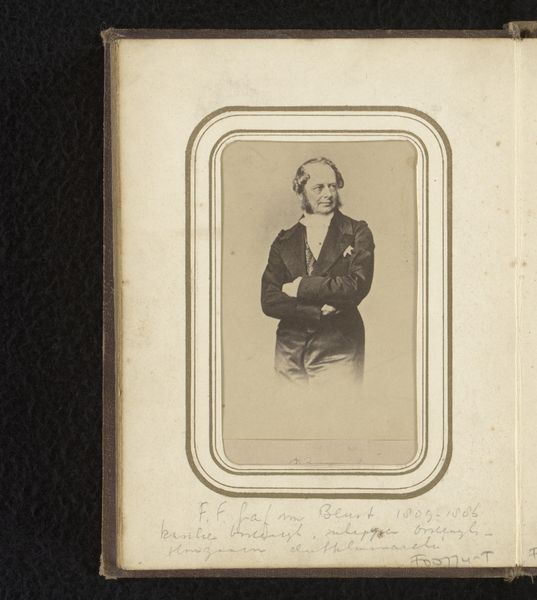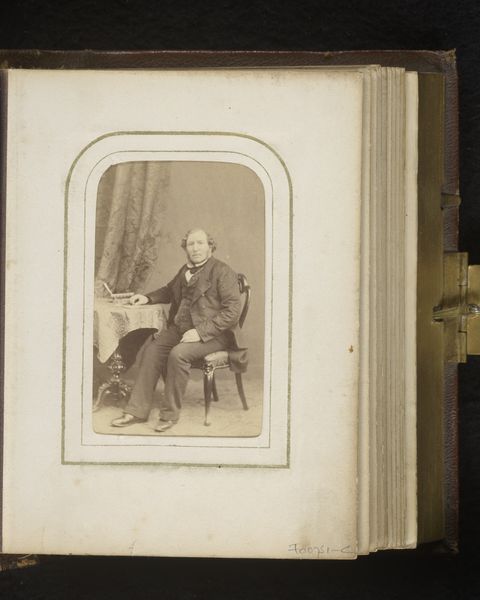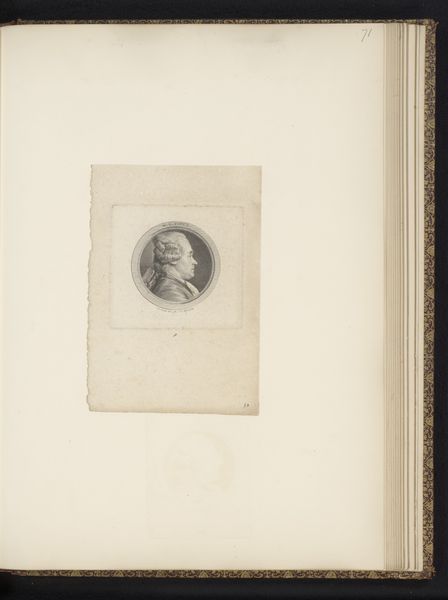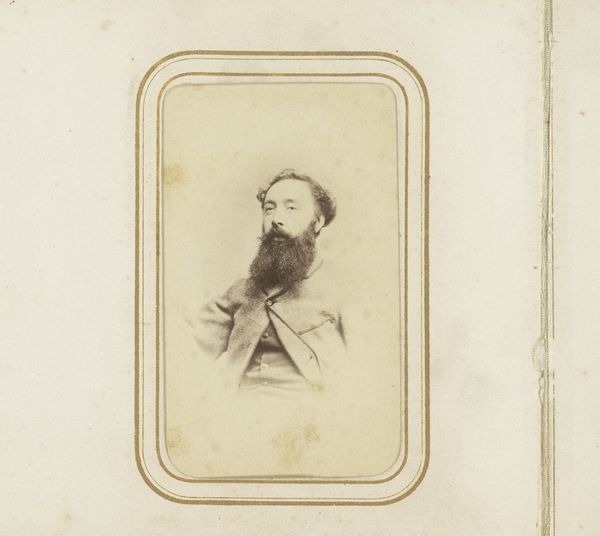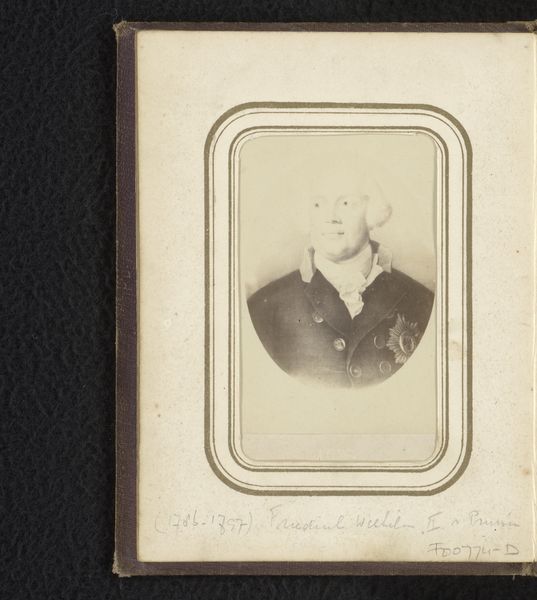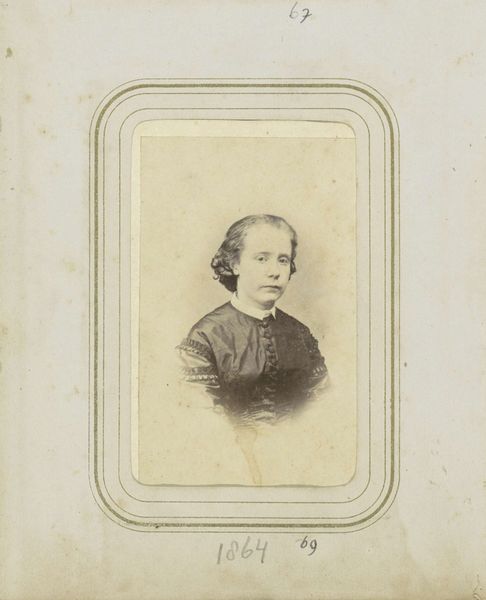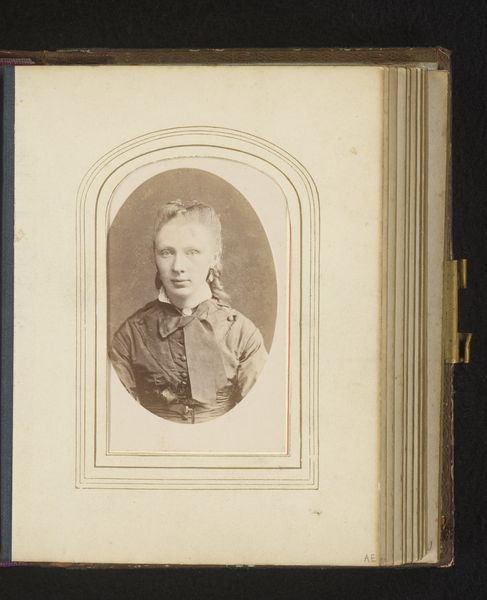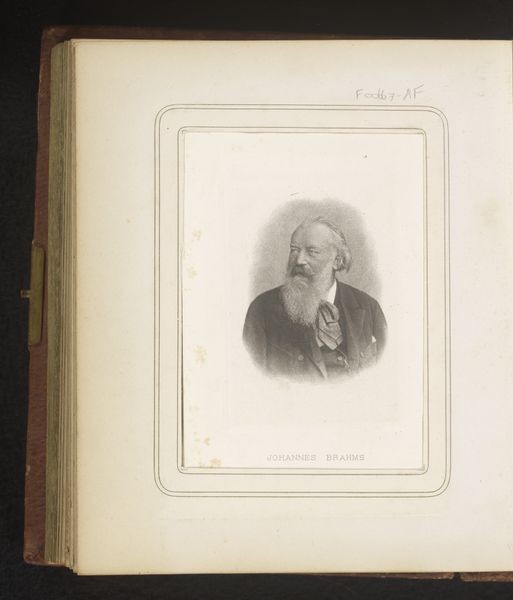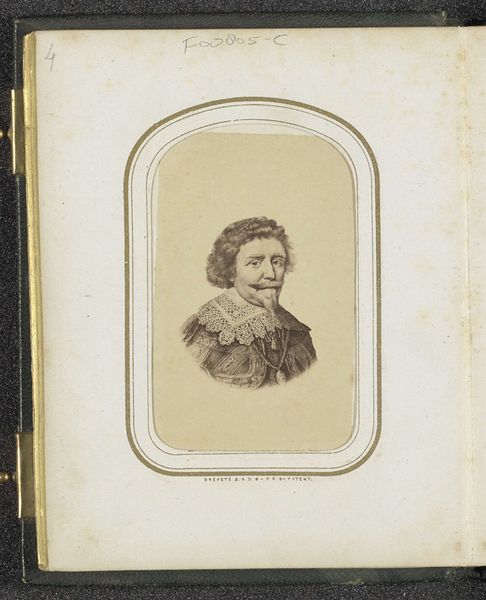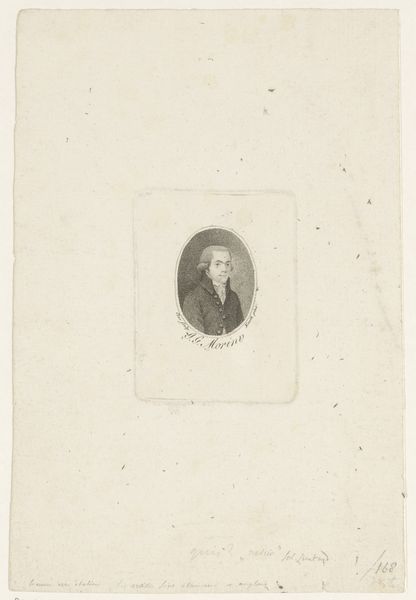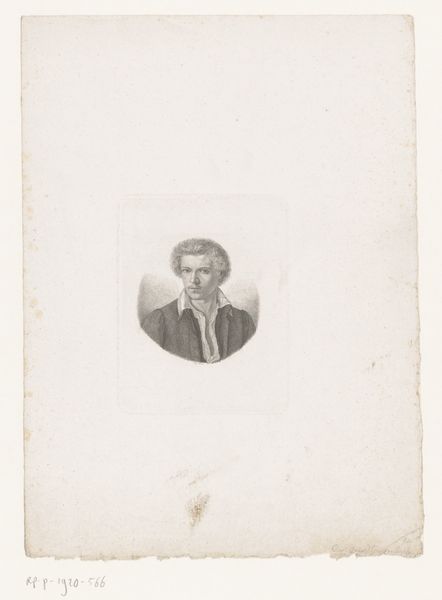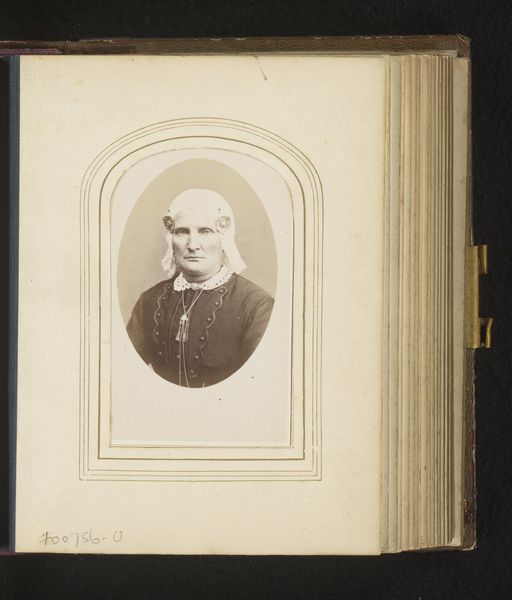
Fotoreproductie van (vermoedelijk) een prent van Willem I, koning der Nederlanden c. 1860 - 1880
0:00
0:00
anonymous
Rijksmuseum
Dimensions: height 92 mm, width 57 mm, height 98 mm, width 59 mm
Copyright: Rijks Museum: Open Domain
Editor: Here we have what's believed to be a photographic reproduction of a print of Willem I, King of the Netherlands, created sometime between 1860 and 1880. It looks like a gelatin silver print, now residing here at the Rijksmuseum. The sepia tones lend it such a nostalgic air. What's your perspective on it? Curator: This photograph’s materiality offers a fascinating glimpse into the evolving processes of image production and consumption. We must ask, why reproduce a print through photography? What did this new medium offer that the original lacked? Editor: Maybe wider distribution? Making the image more accessible to a broader public? Curator: Exactly. The mass production of photographic prints allowed for wider circulation of royal imagery, transforming the consumption of portraiture. Note also the framing – a relatively cheap embellishment. How might the material quality affect how people viewed royalty at the time? Did it elevate or democratize their image? Editor: I never thought about photography as something other than the final product, rather as part of this much larger historical process. Curator: The seemingly simple photograph holds immense value as evidence of social and economic shifts in image production. By examining its materiality and context, we gain a richer understanding of the period and its relationship to representation. Editor: Thanks. That's a helpful perspective on approaching art from a material perspective!
Comments
No comments
Be the first to comment and join the conversation on the ultimate creative platform.
